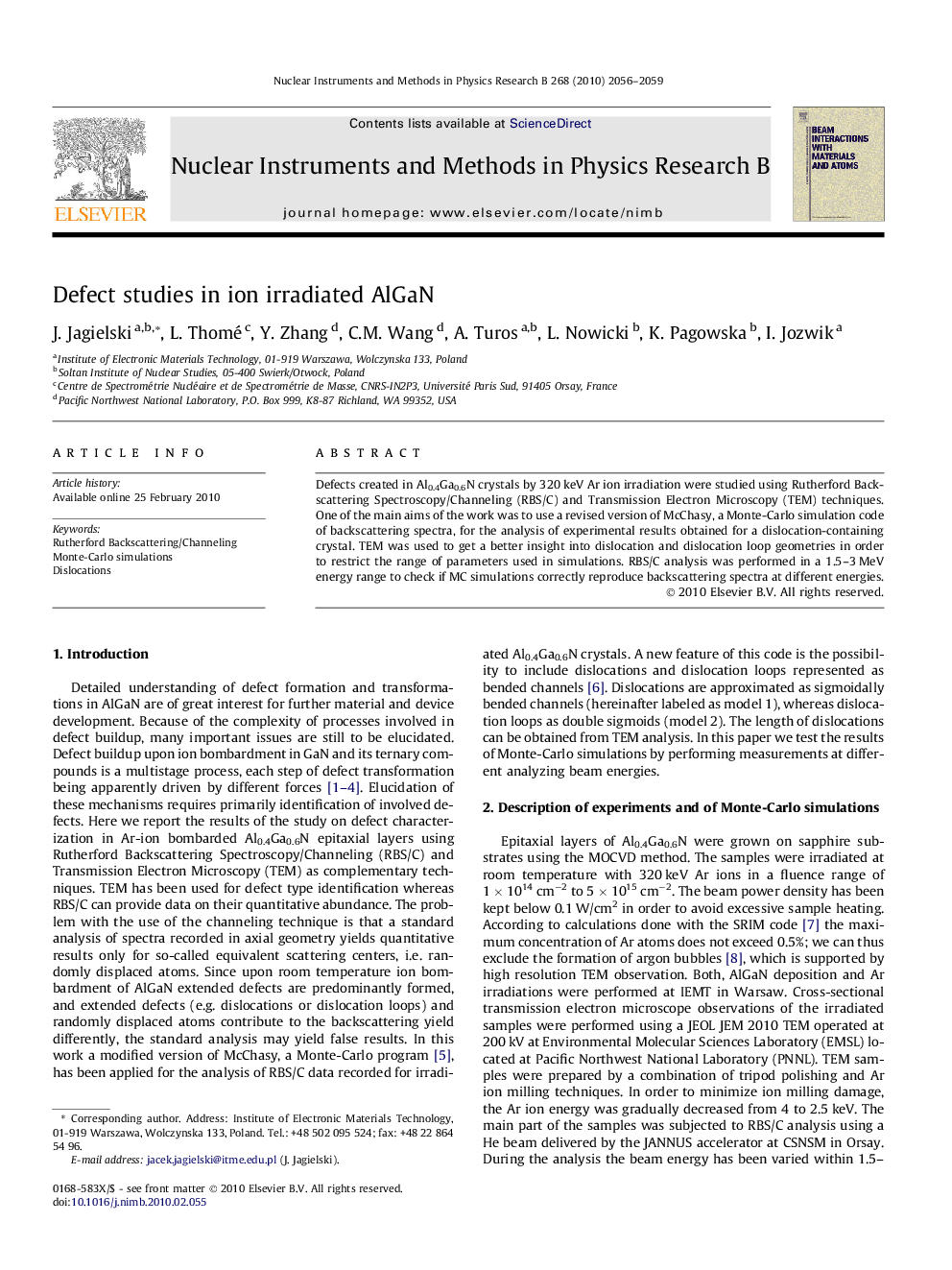| Article ID | Journal | Published Year | Pages | File Type |
|---|---|---|---|---|
| 1684277 | Nuclear Instruments and Methods in Physics Research Section B: Beam Interactions with Materials and Atoms | 2010 | 4 Pages |
Abstract
Defects created in Al0.4Ga0.6N crystals by 320 keV Ar ion irradiation were studied using Rutherford Backscattering Spectroscopy/Channeling (RBS/C) and Transmission Electron Microscopy (TEM) techniques. One of the main aims of the work was to use a revised version of McChasy, a Monte-Carlo simulation code of backscattering spectra, for the analysis of experimental results obtained for a dislocation-containing crystal. TEM was used to get a better insight into dislocation and dislocation loop geometries in order to restrict the range of parameters used in simulations. RBS/C analysis was performed in a 1.5–3 MeV energy range to check if MC simulations correctly reproduce backscattering spectra at different energies.
Related Topics
Physical Sciences and Engineering
Materials Science
Surfaces, Coatings and Films
Authors
J. Jagielski, L. Thomé, Y. Zhang, C.M. Wang, A. Turos, L. Nowicki, K. Pagowska, I. Jozwik,
